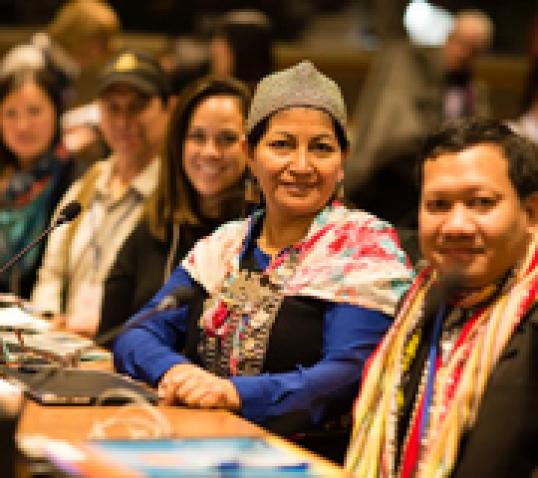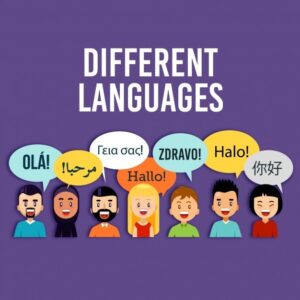Language serves as a vital reflection of culture, history, and identity, encompassing aspects of cultural heritage and linguistic diversity. However, thousands of languages worldwide, including many indigenous languages, are at risk of extinction.
It is essential to comprehend the concept of endangered languages, which play a crucial role in language preservation, and their significance in our interconnected world.
This article examines the importance of these languages, the implications of their disappearance, and the innovative methods being employed to preserve them through education, art, and community engagement initiatives.
We invite you to explore the challenges and successes encountered in the endeavor to protect linguistic diversity, through language revitalization and effective preservation strategies.
What Are Endangered Languages?
.jpg_00.jpeg)
Endangered languages are those that face the risk of becoming extinct as their speakers pass away or transition to speaking another language, thereby jeopardizing cultural identity and linguistic diversity.
The prevalence of endangered languages globally is substantial, with numerous indigenous languages at risk of extinction due to globalization and shifting social dynamics, necessitating language policy and advocacy.
This situation affects not only the speakers of these languages but also endangers the cultural heritage and oral traditions linked to them, highlighting the urgent necessity for language preservation initiatives and creative partnerships.
Why Are Endangered Languages Important To Preserve?
The preservation of endangered languages is essential for maintaining cultural identity, as each language embodies the unique narratives, traditions, storytelling, and histories of its speakers.
The extinction of a language corresponds to the loss of an entire worldview and a significant body of indigenous knowledge, particularly within communities that depend on oral traditions.
Furthermore, language preservation plays a critical role in enhancing linguistic diversity, which is vital for promoting social inclusion, multilingualism, and safeguarding the language rights of marginalized communities worldwide.
What Are The Consequences Of Language Extinction?
Language extinction has significant consequences, resulting in the erosion of cultural heritage, loss of knowledge, and reduced community engagement among speakers. When languages become extinct, the oral traditions and unique cultural expressions associated with them also diminish, leading to a homogenized global culture that lacks diversity. This transition may prompt social activism and the efforts of language activists, as communities endeavor to revitalize their languages and advocate for their linguistic rights.
The impact of language extinction extends beyond mere communication; it influences identity and a sense of belonging, as language is a fundamental aspect of how individuals connect with their heritage and history. This loss can foster feelings of isolation and disconnection, spurring social movements aimed at preserving endangered languages through education, community involvement, and cultural resilience.
Cultural practices and wisdom passed down through generations, often conveyed through proverbs and storytelling workshops, are at risk of vanishing, endangering not only the community but also the broader landscape of linguistic anthropology and knowledge. Consequently, individuals and organizations dedicated to cultural preservation assume a vital role in fostering pride and unity, motivating younger generations to embrace their linguistic roots and actively engage in the preservation of their cultural legacy through language survival strategies.
How Are Endangered Languages Preserved Through Education?
Education serves a crucial function in the preservation of endangered languages through initiatives such as bilingual education, language revitalization programs, language immersion methodologies, and curriculum development.
By incorporating endangered languages into the curriculum, educational institutions enable students to connect with their linguistic heritage, thereby promoting a sense of cultural identity and continuity.
Additionally, community workshops and arts-based learning, including creative writing and artistic expression, contribute to these educational efforts by creating opportunities for intergenerational learning and active participation.
What Are Some Examples Of Language Revitalization Programs?
Language revitalization programs exhibit considerable variation, with successful instances emerging from educational institutions and community engagement initiatives that emphasize language documentation and pedagogical strategies.
Programs designed to promote language skills through cultural festivals, workshops, digital resources, and creative arts have demonstrated effectiveness in rekindling interest in endangered languages.
These initiatives frequently involve collaborations with language advocates, community leaders, and advocacy groups to ensure both authenticity and relevance.
For example, the Kanyen’kéha program in Canada effectively integrates traditional teaching methods with modern technology by utilizing online platforms to engage younger generations, thereby enabling them to learn and use their indigenous language in everyday conversations.
Similarly, the Hawaiian Language Immersion Schools implement an immersive curriculum in which children are instructed not only in the language but also in the cultural narratives and histories associated with it, fostering a profound sense of identity.
By actively involving both youth and elders in these initiatives, such programs create an environment conducive to cultural expression, thereby enhancing community involvement, youth involvement, and promoting sustainable language use and cultural pride.
How Does Art Play A Role In Preserving Endangered Languages?
.jpg_01.jpeg)
Art functions as a vital medium for the preservation of endangered languages, providing opportunities for cultural expression and artistic representation that resonate with both local communities and wider audiences.
Through diverse forms of art, including performance art, visual storytelling, music, and dance, endangered languages can be celebrated and revitalized, fostering a shared environment for cultural narratives to flourish.
Artistic initiatives frequently emphasize community involvement and cultural exchange, actively engaging younger generations in the preservation efforts.
What Are Some Examples Of Art Forms Used To Preserve Languages?
Various art forms, including performance art, visual arts, storytelling, and traditional crafts, have been employed to preserve endangered languages, fostering impactful educational experiences that engage both participants and audiences.
Through these artistic expressions, learners are exposed to the sounds, rhythms, and nuances of the language, which significantly enhances their comprehension and fluency. For example, community workshops that integrate visual arts enable participants to create murals or illustrations that depict traditional stories or cultural symbols, thereby establishing a visual language that complements verbal communication.
Similarly, dance and theater performances offer a dynamic platform for language utilization, where actors embody the emotions and history associated with their words, thereby deepening listeners’ connections to the culture.
These arts-based learning approaches, including art exhibitions and artist residencies, not only facilitate language acquisition but also promote cultural awareness, ensuring that the rich linguistic heritage of these languages is recognized and transmitted to future generations.
What Are The Challenges Of Preserving Endangered Languages?
The preservation of endangered languages encounters considerable challenges, particularly due to globalization, which frequently results in a reduction of linguistic diversity as dominant languages prevail over heritage languages and local dialects.
Furthermore, insufficient financial resources and the absence of supportive language policies impede effective language preservation efforts, creating obstacles for communities striving to maintain and revitalize their linguistic heritage through partnerships and funding opportunities.
To effectively address these challenges, collaboration among community leaders, educators, preservation organizations, and language centers is essential.
How Does Globalization Affect Language Preservation?
Globalization has a profound impact on language preservation, often resulting in language endangerment as global languages dominate and local dialects are marginalized, challenging heritage conservation. This shift not only poses a threat to linguistic diversity but also undermines cultural sustainability, as communities become increasingly disconnected from their heritage languages.
It is essential to address these challenges through social inclusion initiatives and cultural awareness programs, which foster a sense of belonging and identity among language speakers.
As the influence of dominant languages expands, many local languages experience a decline in fluency, particularly among younger generations who are drawn to languages perceived as more economically advantageous, underscoring the importance of language tutors and mentorship programs. This trend creates a cycle in which traditional knowledge, stories, and expressions associated with local languages begin to diminish, thereby risking the loss of unique worldviews and histories.
Engaging communities through immersive language workshops, storytelling workshops, and incorporating language studies into educational curricula can empower speakers to reclaim their native tongues. By promoting intergenerational transmission and establishing platforms that celebrate linguistic diversity, stakeholders can inspire pride in cultural heritage, motivating new generations to actively participate in the revitalization of their languages through social impact.
What Are The Financial Obstacles Of Language Preservation?
Financial obstacles represent a significant barrier to effective language preservation initiatives, often restricting the availability of educational resources and community engagement programs that support endangered languages. Numerous communities lack the necessary funding to implement language revitalization efforts, which can impede the development of curricula, community workshops, documentation projects, and media representation.
It is essential for community leaders and preservation organizations to collaborate in securing sustainable funding sources to promote linguistic heritage and language preservation.
The repercussions of such financial limitations are extensive, impacting not only the preservation of the languages themselves but also the cultural identity and linguistic diversity of the communities involved. In the absence of adequate funding, innovative educational initiatives designed to inspire younger generations to embrace their native languages may struggle to succeed, affecting language revitalization efforts.
Consequently, it is imperative for various stakeholders—including local governments, educational institutions, and non-profit organizations—to establish partnerships that can consolidate resources, expertise, and advocacy. By working collaboratively, they can develop comprehensive funding proposals and raise awareness about the importance of linguistic diversity and community engagement, ultimately fostering a more inclusive dialogue surrounding the value of all languages within their communities.
What Can Individuals Do To Help Preserve Endangered Languages?
.jpg_10.jpeg)
Individuals hold a vital position in the preservation of endangered languages by actively participating in language advocacy, community involvement, and cultural sensitivity initiatives. Through engagement in educational programs and cultural heritage events, individuals can support the continuation of indigenous languages.
By promoting awareness and appreciation of linguistic diversity, individuals can significantly contribute to revitalization efforts and support educational programs focused on endangered languages, including curriculum development and language documentation projects.
Participation in local cultural workshops, storytelling events, and artistic expression activities can further facilitate intergenerational learning and enhance community engagement. These events often include traditional crafts, performances, and visual arts that enrich cultural programs.
How Can People Support Language Revitalization Efforts?
Supporting language revitalization efforts can manifest in various ways, from participating in local community workshops to advocating for educational outreach programs that promote endangered languages. Individuals may contribute their time and resources to assist in the development of language materials, facilitate workshops, and engage with language communities, thereby fostering a sense of ownership and cultural pride. Additionally, leveraging social media platforms to raise awareness about language initiatives, preservation organizations, and cultural exchange programs constitutes another significant form of support.
Furthermore, individuals can join or establish community-based language groups dedicated to teaching and learning target languages within a supportive environment. Attending language festivals and community workshops serves as an engaging opportunity to immerse oneself in the richness of these cultures while building connections with speakers and supporters.
Collaboration with local educational institutions to incorporate endangered languages into curricula is essential for ensuring that younger generations gain exposure to and appreciation for these languages, thereby enhancing revitalization efforts. Partnering with cultural institutions to promote storytelling, oral traditions, and creative arts projects can further aid in preserving and revitalizing linguistic heritage, underscoring the shared responsibility to nurture and sustain these invaluable languages.
What Are Some Ways To Learn And Appreciate Endangered Languages?
Learning and appreciating endangered languages can be effectively achieved through various methods, including immersion programs, the use of language resources, and participation in cultural festivals that celebrate linguistic diversity. Engaging with heritage languages through bilingual education and language classes can also be beneficial.
Engaging with speakers of heritage languages and attending workshops can significantly enhance language acquisition while fostering a deeper connection to cultural narratives and oral traditions. Additionally, the utilization of multimedia projects, language documentation, and digital resources can facilitate the learning process, contributing to language preservation and revitalization.
Explorations of local community centers, where language courses and creative writing workshops are frequently offered, present further opportunities for learners to establish connections and engage in cultural exchange.
Language exchange programs enable individuals to partner with native speakers, thereby providing a platform for authentic dialogue and practice. Furthermore, online platforms and social media networks play a crucial role, as they connect learners with advocacy groups dedicated to the preservation of these languages and language activists who promote language rights and access.
Such initiatives not only promote the practical aspects of language learning but also inspire a profound appreciation for the rich histories embedded within these languages, underscoring their significance in fostering cultural identity, continuity, and cultural resilience.
Frequently Asked Questions
What is the importance of preserving endangered languages through education and art?
Preserving endangered languages through education and art helps to maintain cultural diversity and prevent the loss of valuable linguistic heritage. It also promotes respect for different cultures, encourages intercultural understanding, and embraces multilingualism as part of cultural resilience.
How does education play a role in preserving endangered languages?
.jpg_11.jpeg)
Education is essential in preserving endangered languages as it provides the necessary tools and resources for individuals to learn and use these languages. Through formal education, including innovative teaching methods, individuals can gain literacy and fluency in endangered languages, ensuring their continued use and preservation.
What role does art play in preserving endangered languages?
Art, such as traditional music, dance, storytelling, and visual arts, is a powerful tool for keeping endangered languages alive. It helps to transmit cultural knowledge and values, which are often embedded in language. Art also serves as a means of preserving and celebrating the unique identities of endangered language speakers through artistic expression and cultural programs.
Are there any specific strategies or methods used for preserving endangered languages through education and art?
Yes, there are various strategies and methods, such as language immersion programs and creative partnerships, that have been successful in preserving endangered languages through education and art. These programs involve using the endangered language as the primary medium of instruction, creating a rich learning environment for students to acquire and use the language.
How can individuals get involved in preserving endangered languages through education and art?
Individuals can get involved in various ways, such as volunteering with organizations that support endangered language education and art programs, attending cultural events and performances, and learning an endangered language themselves. Engaging in language classes, storytelling workshops, and mentorship programs are other ways to contribute. Every effort, no matter how small, can make a difference in preserving endangered languages.
What are the potential benefits of preserving endangered languages through education and art?
Preserving endangered languages through education and art can have numerous benefits, including increased cultural diversity and awareness, preservation of traditional knowledge and practices, and improved connections and relationships between different communities. It can also have positive effects on individuals, such as improved cognitive skills, empowerment, and a sense of pride and cultural identity.

My name is Bruno, I have been a writer for 5 years and I work with website creation. My goal is to provide true information to readers. In fact, on this site I write about cultures and traditions, which I have been passionate about since childhood.




